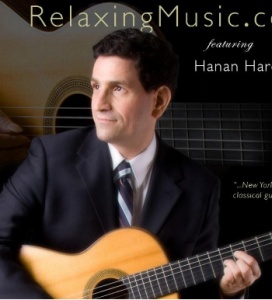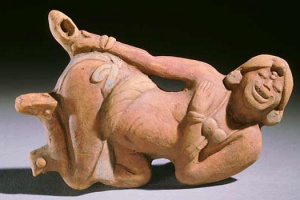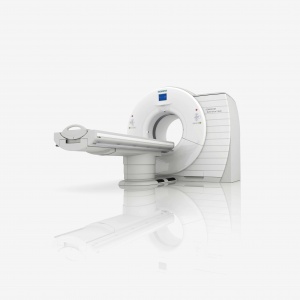November 27th, 2008 by Dr. Val Jones in Expert Interviews
2 Comments »
Happy Thanksgiving everyone – I thought I’d blog about food today, and to try to persuade you to trade that pumpkin pie for a glass of milk…
I learned some interesting things at the Dairy Science Forum on November 13th in DC. Dr. David McCarron presented some compelling data on the effects of the DASH diet on reducing blood pressure. The DASH diet is fairly high in dairy products (2-4 servings/day), fruits, and vegetables. In comparison with a low-salt diet (which reduces systolic blood pressure by an average of 1 point), the DASH diet can cause an average reduction in systolic blood pressure of ten points. If you have high blood pressure (and your kidneys are functioning normally) you probably shouldn’t worry all that much about the salt. It’s more important to stick with the DASH diet.
I interviewed Dr. McCarron about the role of dairy in blood pressure management. Here’s what he had to say:
Dr. Val: If salt isn’t the real enemy, and dairy can help to reduce blood pressure, why isn’t that message getting out?
Dr. McCarron: We have national nutrition policies in place that are old and out of date. The healthy eating paradigm – low fat, low sugar, low salt – was established 40+ years ago and when new evidence is obtained, it’s really hard to crack through that illusion of knowledge. There is excessive mistrust of new data because of the attitude that if it conflicts with our previous beliefs, it can’t be true. I believe that the Internet will be critical in allowing the evidence to bubble up. For example, a diet rich in dairy food is absolutely associated with a reduction in virtually all chronic medical conditions. We have data to support this for people of all ethnicities and from around the world. I think that consumers are looking for clarity and simplicity in their nutritional advice – and basically they need to know that a healthy diet requires 3-4 servings of dairy and 5-6 servings of fruits and vegetables/day. If you do that alone (along with regular exercise) you’ll be amazed by the results.
Dr. Val: What is the proposed mechanism by which dairy has all these positive effects?
Dr. McCarron: It’s almost impossible to nail down specific mechanisms because milk products contain so many ingredients (electrolytes, key vitamins, bioactive proteins, and essential fatty acids). Trying to understand which piece is impacting very complicated physiological control mechanisms within the body (that have 30-40 different vectors feeding into them) is extremely difficult. In fact, the permeatations make it almost impossible. We can’t come up with the proof that we do for drugs (which contain only one bioactive ingredient). What we do know, though, is that dairy is a vital component for chronic disease reduction and prevention. Unfortunately the policy people say, “you haven’t explained to me how this works, so I’m not going to consider it.”
Dr. Val: But what about the research suggesting that whey protein contains lactokinins that function similarly to ACE inhibitors (a type of blood pressure medicine)?
Dr. McCarron: That’s been known for over a decade. There’s no question that there are small peptides (proteins) in milk that have a positive impact on blood pressure, mood disorders, and weight reduction. The industry doesn’t want to talk about it because it makes milk sound like a drug, which isn’t effective marketing. Also the average consumer doesn’t have enough background to understand what that means (lactokinins have ACE inhibitor-like effects in vivo), so we need to simplify the message and disseminate it via the Internet.
References:
NEJM, 1998 Effects of Dietary Patterns On Blood Pressure
Am J Hyper, 2004 McCarron and Heaney
JAMA, 2002 Pereria et al
Science, 1984, McCarron et al
JAMA, 1996, Bucher et al
November 26th, 2008 by Dr. Val Jones in Announcements
No Comments »
I have an artist friend in New York City who is incredibly talented. He (Hanan Harchol) is a professional animator and illustrator with a Masters from the Art Institute of Chicago. Of course (in these economic times especially) making a living as an artist can be a real challenge. Hanan keeps himself afloat by working evenings as a strolling classical guitarist in upscale Manhattan restaurants. I’ve attended several of his shows, and he is super talented. This holiday season he made a compilation CD of lullabies and I highly recommend it.
Supporting my friend does a few things: 1) his CD is an affordable holiday gift for your friends and family 2) his CD is one of the few gifts I can think of that may reduce the anxiety felt by all of us in these challenging economic and political times and 3) your support helps a truly gifted artist continue to do what he does.
So take a listen to his work here – I’m sure you’ll agree, it beats anti-anxiety meds hands down.

November 26th, 2008 by Dr. Val Jones in Announcements
4 Comments »
Matthew Holt and Paul Levy have encouraged medical bloggers to join together around a common goal for Thanksgiving: to talk to our loved ones about end-of-life preferences. Now I know this may seem a bit morbid at first blush – but it is really important that each of us create a living will and durable power of attorney document. There’s no better time to discuss this than a holiday where we all get together with our families to enjoy one anothers’ company and our gratitude for what we have.
I used the Suze Orman site templates to create mine (I received a free CD Rom). It was really easy to do. Living Wills provide guidelines about your wishes for care in the event that you are unable to express your opinions. The Durable Power of Attorney document makes it clear whom you’d like to “call the shots” on your care if you’re unable to do so for yourself.
If you haven’t done so already, why not consider the following three steps over Thanksgiving?
1. Discuss the “Engage with Grace” slide with your loved ones.
2. Fill out living will and power of attorney documents at Suze’s site (or find another site online that has a good template that you can use to express your wishes).
3. Get those documents affirmed by a notary public and send a copy to your doctor to add them to your medical record.
Every person at every age needs to have an end-of-life care plan. Why not join with thousands of blog readers in settling this matter for yourself and your loved ones this Thanksgiving?

November 25th, 2008 by Dr. Val Jones in Audio, Expert Interviews
7 Comments »

Photo Credit: authenticmaya.com
The blogosphere has been buzzing lately about the idea of “fecal transplants,” probably because this treatment (first studied in the 80’s) was recently mentioned on Grey’s Anatomy. Proponents of the therapy (which involves the introduction of donor stool into a patient via enema or naso-gastric tube) say that it can rejuvenate intestinal flora and cure c. diff colitis, and various inflammatory bowel disorders. I had my doubts about these claims and decided to interview gastroenterologist Dr. Brian Fennerty to get to the bottom (sorry abou the bad pun) of this issue.
Dr. Fennerty is a Professor of Medicine in the Division of Gastroenterology at Oregon Health & Science University in Portland, Oregon, where he also serves as Section Chief of Gastroenterology.
Listen to the podcast here:
[Audio:http://blog.getbetterhealth.com/wp-content/uploads/2008/11/brianfennertyfecallq.mp3]
Dr. Val: What exactly is a “fecal transplant?”
Dr. Fennerty: First, by way of background, you need to understand that the GI tract is populated with thousands of varieties of “good” bacteria that are essential for our health. If we didn’t have bacteria in our colon and small intestine, we would die. Fecal transplantation is the repopulation of a person’s gut bacteria (flora) with fecal matter from somebody else. Some argue that this helps to treat certain diseases.
Dr. Val: How is this procedure performed?
Dr. Fennerty: As it was originally described, fecal transplantation involved removing the undigested food particles from the stool sample of a “healthy” person, and then spinning it so that a pellet (of hundreds of thousands of species and quasi-species of bacteria) remains. The pellet is then introduced to the patient through a nasogastric tube into the small intestine, or the pellet can be resuspended in liquid and introduced into the rectum via an enema. The idea is that the bacteria will colonize the patient’s colon and squeeze out the bad bacteria that are in there.
Dr. Val: What are fecal transplants purported to do?
Read more »
November 24th, 2008 by Dr. Val Jones in Audio, News
1 Comment »
I really like new technology, especially when it offers a very obvious advantage for patients. I recently heard about a new CT scanner that is so fast, it dramatically reduces radiation exposure for patients and can take crisp images of moving organs (like the heart). I asked to speak with Siemens’ VP of Sales and Marketing, Dr. André Hartung, to find out about the new Somatom Definition Flash Dual Source CT Scanner (it takes longer to say the machine’s name than to scan your entire body). Of course, I invited my Medgadget friend, Gene Ostrovsky, to join the call. I’ve included a “bonus track” for more advanced readers at the end of this blog post. Enjoy!
Listen to the podcast here:
[audio:http://blog.getbetterhealth.com/wp-content/uploads/2008/11/andrehartunglowq1.mp3]
Dr. Val: Just to set the stage for our listeners – can you explain what a CT scanner is, and how it differs from an MRI?
Hartung: Both CT scanners and MRI machines allow healthcare professionals to look inside the human body for diagnostic purposes. While CT scanners use x-rays to produce images, MRI machines use magnets. CT Scanners are very fast and widely available – almost every hospital has one.
Dr. Val: When would a doctor want to use a CT scanner instead of an MRI machine?
Hartung: CT images are especially good at detecting cancer. Also, because CT scans can be done so quickly, they are also useful diagnostic tools for stroke, heart attack, or when a patient is in critical condition – when every second counts.
Dr. Val: You said that CT scans are based on x-ray technology. How much radiation exposure does the average CT scan cause?
Read more »














